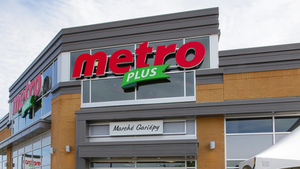FMI MIDWINTER EXECUTIVE CONFERENCE 2001-01-22 (2)
BOCA RATON, Fla. -- Equity values of the supermarket sector have sagged in the past couple of years because investors -- perhaps mistakenly -- perceive that the industry is approaching the end of a 50-year growth cycle and will experience little growth henceforth. That's the outlook of Ed Comeau, managing director for equity research, Credit Suisse First Boston, New York. Comeau was a speaker at last
January 22, 2001
DAVID MERREFIELD
BOCA RATON, Fla. -- Equity values of the supermarket sector have sagged in the past couple of years because investors -- perhaps mistakenly -- perceive that the industry is approaching the end of a 50-year growth cycle and will experience little growth henceforth. That's the outlook of Ed Comeau, managing director for equity research, Credit Suisse First Boston, New York. Comeau was a speaker at last week's Food Marketing Institute Midwinter Executive Conference here.
Comeau acknowledged in his talk that it's possible that supermarkets have finished their "ninth inning" and will move into a low-growth phase that will prove to be unattractive to investors.
Indeed, the experience of the past two years seems to indicate that investors perceive that to be the case. In 1999, the equity value of the supermarket sector sank some 32%, the poorest performance in recent memory. The sector seemed to bounce back in 2000 with a growth rate of 25%, but to a great extent that average was pulled upward by stellar performers, notably Safeway and Kroger Co.
"Safeway and Kroger, the companies with the largest market capitalization, raised the averages for the group because they lead in consolidation efforts and didn't falter. The market now is defined as narrow defensive havens."
But, he asserted, food retailing need not stop growing and surrendering equity values if it were to lift a leaf from Wal-Mart Stores' book and seek other avenues of growth. "Wal-Mart grew when it otherwise couldn't have done so by getting into different businesses and by going to other countries," he observed.
Similarly, he said, the supermarket industry could convince investors that it is capable of doing much the same by expanding into areas that would further leverage the industry's existing suite of brands, building on its existing infrastructure and expanding on its core competencies.
Among the areas that should be targeted for growth, he said, are these:
Drug stores: This trade channel is already highly consolidated, but there are indications that some operators will fall by the wayside or change hands. It's possible that some supermarket operators will see opportunity in the situation.
Convenience stores: This channel offers obvious synergies.
Mass and supercenter retailing: This channel would be difficult for a supermarket operator to enter in a major way, but it could be done.
Financial services: This could involve the offer of credit under a branded or co-branded basis, as is being done at Kroger and some other operators. The advantage of offering credit to an existing customer base is substantial.
E-commerce: The current third-party models are obvious failures, but there remains a body of consumers who would prefer to source goods in some way other than by shopping in a store. Should a viable economic model be developed, this could be a source of expansion.
International: Some domestic food-retailers may find opportunities to merge with an operator elsewhere in the world, or to partner in some fashion. This activity would most likely involve European companies.
"Investors are interested in the supermarket sector, but they are waiting to see a defined path of growth," Comeau said. "These are ways that a path of growth can be defined in ways other than by continued acquisition."
About the Author
You May Also Like




